20 May Virtual Care Modalities

Virtual Care (aka telehealth), encompasses four distinct domains of applications. These are known as:
LIVE VIDEO (SYNCHRONOUS)
Live, two-way interaction between a person (patient, caregiver, or provider) and a provider using audiovisual telecommunications technology. This type of service is also referred to as “real-time” and may serve as a substitute for an in-person encounter when it is not available. Live video telehealth can be a lifesaving technology. Live video can be used for both consultative and diagnostic and treatment services.
MOBILE HEALTH (MHEALTH)
Health care and public health practice and education supported by mobile communication devices such as cell phones, tablet computers, and PDAs. Applications (Apps) can range from targeted text messages that promote healthy behavior to wide-scale alerts about disease outbreaks, to name a few examples.
STORE-AND-FORWARD (ASYNCHRONOUS)
Transmission of recorded health history (for example, pre-recorded videos and digital images such as x-rays and photos) through a secure electronic communications system to a practitioner, usually a specialist, who uses the information to evaluate the case or render a service outside of a real-time or live interaction. eConsult is a store-and-forward technology that enables primary care providers to dialog with specialists as part of a referral and authorization for specialty care. As compared to a real-time visit, this service provides access to data after it has been collected, and involve communication tools such as secure email or messaging. Store and forward technology like eConsult can be utilized to help access specialty care, even when there are limited board-certified specialists in their community.
REMOTE PATIENT MONITORING (RPM)
Personal health and medical data collection from an individual in one location via electronic communication technologies, which is transmitted to a provider (sometimes via a data processing service) in a different location for use in care and related support. This type of service allows a provider to continue to track healthcare data for a patient once released to home or a care facility, reducing readmission rates. Remote patient monitoring can help keep individuals stay healthy in their home and community, without having to physically go to the providers’ office.
Within each of these four domains, there are a variety of technologies that can be used to facilitate virtual care interactions. These platforms include virtual consult equipment like mobile videoconferencing carts, peripheral monitoring devices to measure patient biometrics, integrated EHR systems and patient portals to expedite information transfer, and HIPAA-compliant software programs that enable virtual visits. Many telehealth and health IT vendors have developed mobile Health (mHealth) applications to track health metrics or promote health education via mobile or web-based platforms.
There are dozens of telehealth or virtual care technologies to choose from. But implementers who ask, “What technology should I invest in?” are focusing on the wrong question. Technology is a tool that enables strategy, not a stand-alone solution. To build a successful strategy that effectively leverages virtual care programs and technology, these tools need to be implemented with an eye towards institutional priorities.



Sorry, the comment form is closed at this time.